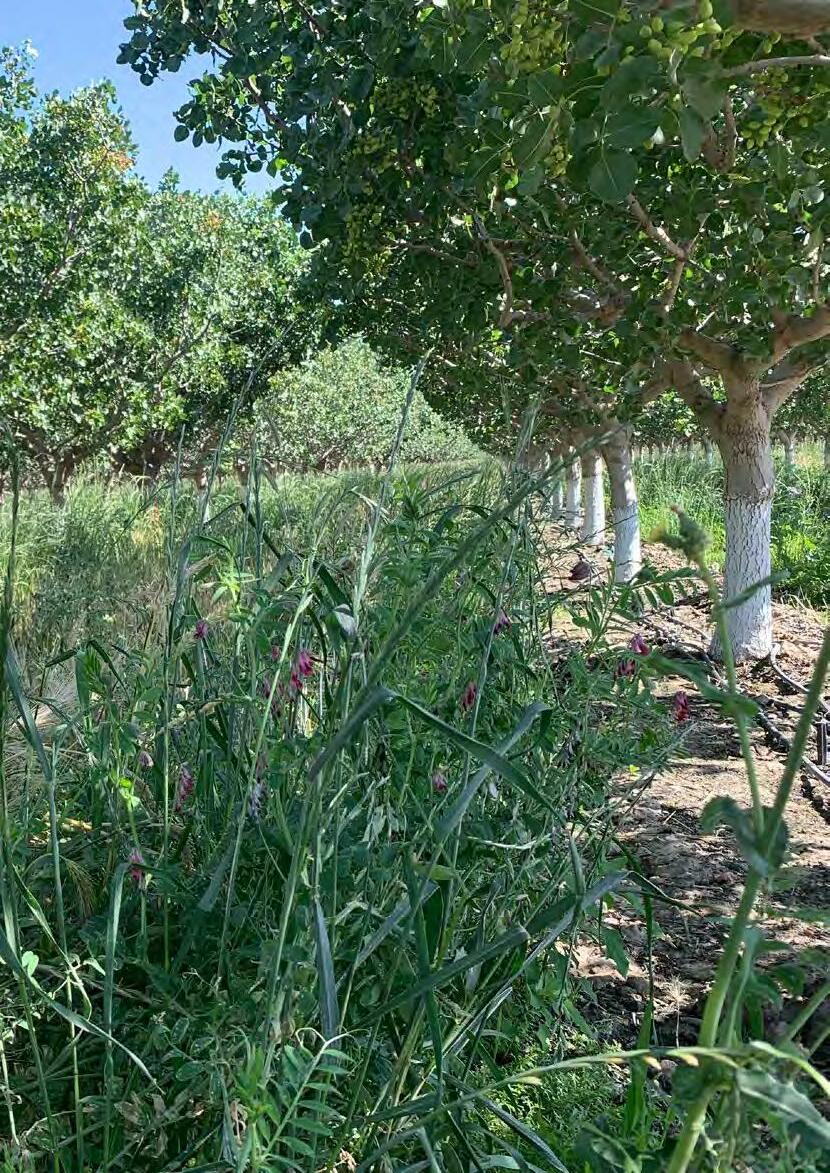

Sustainability report 2021/22
FARMING WITH NATURE
This report is based on the combined worldwide data relating to harvests of the financial year from 1 July 2021 to 30 June 2022.
All production and social data reflect the harvests of the 2021/22 financial year, although for some regions, these data reflect activity occurring during 2020/21.
We use science-based indicators for production, resource use efficiency, employee health and safety, and community outreach – all to promote good governance, sustainable production and to reduce risks.
With this report, Ingleby Farms & Forests ApS reaffirms its support of the Ten Principles of the United Nations Global Compact in the areas of Human Rights, Labour, Environment and Anti-Corruption. In this, our eighth annual Communication on Progress, we describe our actions to continually improve the integration of the Global Compact and its principles into our business strategy, culture and daily operations. We are also committed to sharing this information with our stakeholders.

FARMING WITH NATURE 2021/22 1. edition Ingleby Farms & Forests ApS Slotsgade 1A 4600 Køge Denmark www.inglebyfarms.com CC BY-NC-SA 4.0 © 2022 Ingleby Publications are licensed under a Creative Commons Attribution-Non-Commercial-Share-Alike (CC BY-NC-SA 4.0) License. This means you are free to copy, distribute, display, and make derivative works, but you are not allowed to use our materials for commercial purpose and all derivative works must be licensed under the same terms. For further information, please visit the Creative Commons web page: www.creativecommons.org/licenses Contributors Agnė Vitkauskienė, Andrei Pavel, Asger Ourø Jensen, Danitza Wong Vinces, Deysi Sanchez, Frederik von Magnussen, Isaias Segovia Romaní, Juanita Ruiz García, Julia Williams, Kate Petrie, Kia Lange, Mette Duedahl Høyer, Michala Jeberg, Monica Kejser Wesselhoff, Nicoline Lind, Rafael Leguísamo, Rasmus Juul Christoffersen, Sebastian Neag, Tom McPherson. Photographers Agnė Vitkauskienė, Andrei Govoreanu, Dace Trupāne, Douglas Sibbald, Dragomir Matei-Ionuț, Dustin Verzosa, Frederik von Magnussen, Gabriel Miron, Mayra Escalante Moreno, Michala Jeberg, Oscar Gonzalez, Rafael Leguísamo, Rasmus Juul Christoffersen, Renārs Zommers, Robin Begg, Sebastian Neag, Sebastian Pierini, Tom McPherson. Front cover photo: Michala Jeberg. Editor Michala Jeberg Design BGRAPHIC Print KLS PurePrint
The Ingleby vision

Our vision is to be world-leading regenerative farmers. We farm to produce good, healthy food, and also to protect the environment for future generations.
As farmers, we play an important part in solving some of the most pressing global challenges we face today. We want to farm with nature – not against it. We believe farming done right can help the planet, and we aim to live up to this task every day, in everything we do.
We apply regenerative farming principles and constantly improve our soils. We preserve and enhance the biodiversity on our farms, and work towards sustainable consumption and production.
We treat our people, animals and communities with care and respect.
Because the way we choose to farm today echoes for generations.






4 12 Sustainability memorandum and metrics 36 Our Animals 20 Our certifications 18 Our Farms Contents Contents



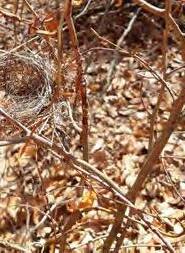

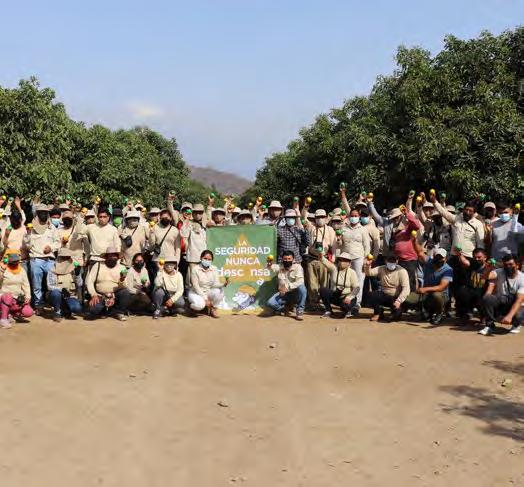
5 56 Our Climate 50 Our Communities 42 Our Nature Contents 24 Our Soil
A message from our CEO

As hands-on farmers and long-term owners of land, Ingleby Farms believes in farming in harmony with nature. Through regenerative farming practices, we build resilient farms, adapted to the increasingly unpredictable weather patterns. We farm with a 150-year perspective – and therefore, we are willing to invest in decisions, actions and innovation where the value only arises after extended periods of time. For us, it makes sense to improve our soils and nature, to minimise our impact on the climate and environment, to support local communities and to be good citizens.

6 Our Farms
Contents
Rincon de los Tapes, Uruguay
Global instability
2021/22 has been a very unusual year, impacted by all sorts of challenges; continued pandemic restrictions, the war in Ukraine, energy crisis, disrupted trade flows, food crisis, frequent extreme weather events, soaring inflation, increased interest rates, water issues – and the list goes on. Although affected by the current state of the world, our farms are in good shape; our diversity and long-term perspective are proving their worth.
Despite the unpredictable global instability, we delivered a positive and satisfactory financial result. Main drivers behind this result were the record-high commodity and livestock prices combined with a significant stock of inputs acquired before prices skyrocketed. On the other hand, market oversupply, reduced discretionary consumer income and logistical challenges had a negative impact on our avocado performance.
Extreme weather

Our harvest season in Europe was seriously affected by unusual and severe weather conditions; a drought and heatwave during June and July 2021 caused all crops to mature at the same time – and then extreme rain in early August delayed our harvest for weeks. In Romania, several hailstorms in July took a toll on our blueberry orchard, while we saw our East Cape farms in New Zealand being flooded. We also saw a severe drought in California. This trend in weather events confirms that water access and drainage are extremely critical, and that regenerative soil management practices are key to resilient farms.
Healthy soil makes a strong foundation
Our teams’ dedication to regenerative farming is encouraging and we improve the quality of our soil every year. We do this by leaving sufficient crop residues on the ground, using cover crops, tilling as little as possible, striving for living roots throughout the year and by integrating animals for manure application, weed suppression and for stomping plant residues into the soil. These practices increase the quantity of organic carbon
returned to the soil, limit erosion, add or fix nitrogen to the soil and increase biodiversity in the fields and in the soil. This rich ecosystem will support a myriad of beneficial organisms that will maintain a balance in our production and prevent pests and weeds from taking over.
Despite all the disruptions around us, we steadily “walk the talk“ on each farm, every day. To nurture best-practice sharing and crosspollination of ideas across our 42 farms, we launched the Ingleby Pioneers programme. The programme was well-received and will ultimately support our journey towards our 2030 commitments.
Health and safety
The health and safety of our colleagues is our highest priority. During 2021/22, we had 17 accidents with time off work. Our LTIFR (lost time injury frequency rate) this year was 2.76, our second-best year in terms of safety, compared to 1.92 in 2019/20, the safest year ever. Peer benchmark is 9.5. We are determined to reach our goal of zero accidents and have increased general safety awareness through internal campaigns focusing on identifying and correcting unsafe conditions, as well as sharing learning from reported near-misses.
I look forward to supporting our progress towards our 2030 commitments as well as strengthening our company-wide collaboration towards “One Ingleby”.
Andrei Pavel CEO


7 Our Farms
Contents


Our Farms 8 Contents
Siriu Lake, Romania
Welcome to our latest Farming with Nature report
Since Ingleby Farms was founded in 1998, we have remained dedicated to sustainable farming. In 2019, we committed ourselves to regenerative farming practices, or as we call it in daily terms: Farming with Nature.
Soil is the foundation of everything we do at Ingleby Farms. Healthy, living soil lies at the heart of Farming with Nature and it is the key to growing wholesome food while taking care of the environment, our teams, livestock and biodiversity on our natural and farmed lands.
We want to make a lasting impact: beautiful farms and living landscapes with rich biodiversity, good water quality, healthy soils with high levels of sequestered carbon and strong resilience to climate change. All while producing nutritious food, feed and fibre.
Food production is a significant contributor to climate change, and the largest driver of biodiversity loss around the globe. How we farm has never been more important. And on top of these environmental concerns, rising food insecurity and the eroding world stability shows, that now – more than ever – we need to make sure our food supplies and environment are as safe and secure as possible.
In the past year, we have continued our efforts to reduce the carbon we emit, cut our use of synthetic pesticides, improve the safety of our teams and actively foster healthy living soils.
All to protect our climate, care for our teams and to benefit nature. We are protecting and setting aside arable land for nature, and we continue to improve ways of farming in a more nature-friendly and biodiversity-supporting way.
We use evidence-based solutions, and we measure and track all our practices to provide reliable data and consistent reporting. Read on to find out more about our achievements from the 2021/22 financial year.
If you have any questions or comments, please don’t hesitate to get in touch.

 Mette Duedahl Høyer Chief Sustainability Officer
Mette Duedahl Høyer Chief Sustainability Officer

9
Our Farms Contents
Farming with Nature
Farming with nature is a holistic approach, and we are learning to understand and embrace the wonderfully complex biological systems of interrelated components. Farming with nature is about putting together many pieces of a puzzle to get a broader picture.
Our goal to become synthetic pesticide-free and climate positive by 2030 calls for a different set of skills. Our transition from using chemicals and tillage into regenerative farming is a journey towards significantly higher levels of biological knowledge, observation, understanding and problem-solving skills.

Nature provides us with many solutions that help us reduce use of synthetic inputs, reduce production cost and create safer foods. Examples are insect pest control in the form of providing habitats to attract and sustain natural enemies, ensuring plant nutrients and water by keeping best possible crop rotations, planting cover crops, integrating livestock into our systems and using no-till or conservation tillage methods. All of which increase soil life and health at the same time.
Farming with Nature helps us to adapt and ensure that our food production is more resilient to future weather extremes like droughts or heavy storms by enhancing soil health and water retention and reducing soil erosion. It helps us reduce carbon emissions and store carbon in plants and soils. Also, it enhances biodiversity and species by increasing habitat diversity – first and foremost in the soil.
Setting goals to become synthetic pesticidefree and climate positive by 2030 shows our commitment. These goals are not easy tick-offs, but something that requires hands-on work and substantial changes on how we farm. We are pushing boundaries, investigating and testing technologies that still are under development. Basically, we are re-learning how to farm. It is hard work, but like finalising any puzzle, it is also great fun and exceptionally rewarding!
This publication is structured around our five commitments and provides a summarised progress report from our farms on page 14.
10 Our Farms
Contents
Our 2030 commitments
• Build healthy, living soils
• Synthetic pesticide-free
• Minimise synthetic fertilisers
• Responsible water stewardship
• Open-range and pasture-fed year-round
• Ethical veterinary practices
• World-leading best practice for livestock handling
• Enhance and protect the natural environment
• 10% natural habitats
• 1% water habitats
• Monitor threatened species and ecosystems
• Zero harm work culture
• 2% of work hours in training
• Balanced gender diversity
• Support and engage with local farming and environmental groups
• Climate positive
• Zero waste and zero landfill
• Transition to renewable energy

11
Our Soil Practice regenerative farming Our Animals Raise healthy and ethically treated animals Our Nature Protect and enhance biodiversity Our Communities Grow our people and communities Our Climate Farm for a greener future
Our Farms Contents
Sustainability metrics
A main principle of our Sustainability Memorandum that originates back from 2006, is that “a farm in good heart is easily recognisable”. This saying is as valid as ever. We often invite customers and business partners to our farms, so they can see for themselves – and so they can see that we walk the talk. However, not all are able to visit our farms, so we also verify our actions with data and reporting.


Farming is dependent on countless external factors such as weather, technology, input prices, input availability, market access, soil, water and local environments. Topping it off with a changing geopolitical, climatic and economic landscape, data is truly gold.
In our early days, we created our own sustainability reporting by selecting from the best science-based sustainability standards in other industries. Sustainability reporting in agriculture was yet a discipline in the making. Thus, we developed internal measures, KPIs (key performance indicators), databases and reporting standards to track our journey towards sustainable farming.
Many years later, when official frameworks emerged, Ingleby Farms set the bar even higher, aspiring not only to be sustainable and keep a resource equilibrium, but to be regenerative and restore resources. We committed ourselves to restore soils, increase productivity and improve the environment through even better farming practices.
To measure our regenerative progress, our metrics, KPIs and reporting standards evolved – and continues to evolve – towards a broader and more granular data set. We continuously align our standards with international frameworks to ensure best practice methodology and enable external peer comparison. The recent GRI Sector Standard for Agriculture is a natural next step for us, and we are currently preparing for implementation.
With 12 years of data, our annual Production and Sustainability reporting is anchored in how we think and do things in Ingleby Farms. Reporting helps us track the remarkable development of each of our farms over time, always comparing the farm to itself. We use the data to make our farms even better – from soils, livestock and crops, to climate, biodiversity, safety, education and community outreach.
Sustainability reporting is a strong and wellestablished part of the Ingleby way, helping us uphold our values and affirm our commitment to continuously striving to become better farmers.
Our Sustainability Metrics wheel on the next page illustrates how our sustainability metrics tie into UN SDGs and our own Farming with Nature 2030 commitments.
12
Our Farms Contents
Ingleby Farms was born out of a vision to demonstrate that farming can be done in an environmentally and socially sustainable way while also being economical profitable.

OUR COMMUNITIES • Zero harm work culture, with LTIFR result below our global benchmark • 2% of annual work hours are spent in training • Balanced gender diversity • Support and engage with local farming and environmental groups OUR CLIMATE • Climate positive farming by 2030 • Annual improvements in crop GHG footprints • Zero waste to landfill • Reduce, recycle and reuse farm, o ce and packaging waste • Transition to renewable energy OUR NATURE • Enhance and protect the natural environment • 10% natural habitats • 1% water habitats • Monitor threatened species and ecosystems OUR ANIMALS • Ethical veterinary practices • Open-range and pasture-fed year-round • World-leading best practice for livestock handling OUR SOIL • Build healthy living soils through: - Limited soil disturbance - Covering the soil - Diversification - Living roots - Integrating animals • Synthetic pesticide-free • Minimise synthetic fertilisers • Responsible water stewardship OURCLIMATE OURSOIL O U R COMMUNITIES OUR NATURE OUR ANIMAL S Monthly rainfall Monthly temperature Chill hours Solarradiation LTIFR hourson leave Accidents& near-misses Suppliers code of conduct Regenerative commitments Ingleby's Values Guidelines Energyusee ciency Renewableenergy&biofuels CropGHG emisssions Cropsoil carbon sequestration Invasive pest management Farm environmental plans Bird monitoring Significant/threatened species Natural& aquatic habitats Donations&charity Traininghours ChildrenPerson-hours/ha livingGenderon-farm ratio Sta stability Organic fertilisers & soil amendments Nitrogen-use e ciency Nutrient application & removal Reproduction rate Mortality rate DairyUseofpharmaceuticals cowhealthindicators Crop& grazing diversity Minimumtillage&no-till Covercropping5-yearreferencesoilsampling BiologicalPesticideapplicationcontrol&beneficialinsects Pesticideuse benchmarking Ingleby bannedlistof pesticides Streamhealthmonitoring Groundwaterdepth Ground & drinking water quality Water footprint Water use e ciency Nutrition content Forestry & timber Calories produced Dairy production Meat & wool production Crop production WeatherEnergy&CarbonCompliance Health&SafetyBiodiversity&Nature Water Animal welfare Pesticides Fertilisers Soil Production Communities 13 Our Farms Contents
How are we progressing?

Farming can play a significant role in advancing The Ten Universal Principles on environment, human rights, labour and anti-corruption. We recognise that we can both promote and advance the Sustainable Development Goals (SDGs) while also taking inspiration in refining our own model of sound, regenerative agriculture.
Therefore, we joined the UN Global Compact in 2014 and zeroed in on six key SDGs to intertwine with our five 2030 commitments. To measure and track progress with these commitments, we have developed customized and actionable plans for each farm. Presented below are the highlights of our progress related to the SDGs.

14 Our Farms Contents
Our Farming with Nature journey and internal goals are supported by six of the UN Sustainable Development Goals. Commitment indicator Progress during 2021/22 Build healthy living soils • 20% area with cover crops • 54% no-till, 45% reduced-till • 13% double cropping • 48 different crops grown (diversity) • 4.3% Integrated with livestock Synthetic pesticide-free • 7% reduction compared to benchmark (2016/17 - 2018/19) • Row crops and seeds: 7% reduction • Horticulture: 23% reduction Minimise synthetic fertilisers 10% reduction compared to benchmark (2016/17 – 2018/19) • Row crop and seeds: 9% reduction • Horticulture: 11% reduction • Livestock: 24% reduction Responsible water stewardship • We irrigate 8,175 hectares across Argentina, Australia, Lithuania, Peru, Romania, USA, and Uruguay (17% of total crop and dairy area) • In 2021/22, we applied 38,826 megalitres of water to our fields and orchards (which equals 475 mm per crop) Our Soil Pratice regenerative farming


15 Our Farms
Contents Commitment indicator Progress during 2021/22 Open-range and pasture-fed year-round Ingleby grazes 171,198 sheep, 30,946 beef cattle and 4,100 dairy cows on 36,539 hectares of pasture and fodder crops in Australia, New Zealand, Uruguay, Argentina, Romania, and Latvia For animal welfare reasons, we winter our Latvian sheep indoors where they are provided with fresh hay bedding, and a high proportion of grass silage in their diet Ethical veterinary practices We comply with Ingleby’s code of practice on animal welfare: • Best veterinary practices by trained professionals and staff • Growth promotion hormones are prohibited • Antibiotics and antiparasitic drugs are only used to treat sick or injured animals (incl. groups) and not as pre-emptive treatments World leading best practice for livestock handling • Livestock, horses, and dogs are handled carefully, calmly and with respect by competent and trained staff • Male dairy calves are raised through to 18-24 months as beef cattle Our Animals Raise healthy and ethically treated animals
Lambs in pasture at Graudi farm in Latvia

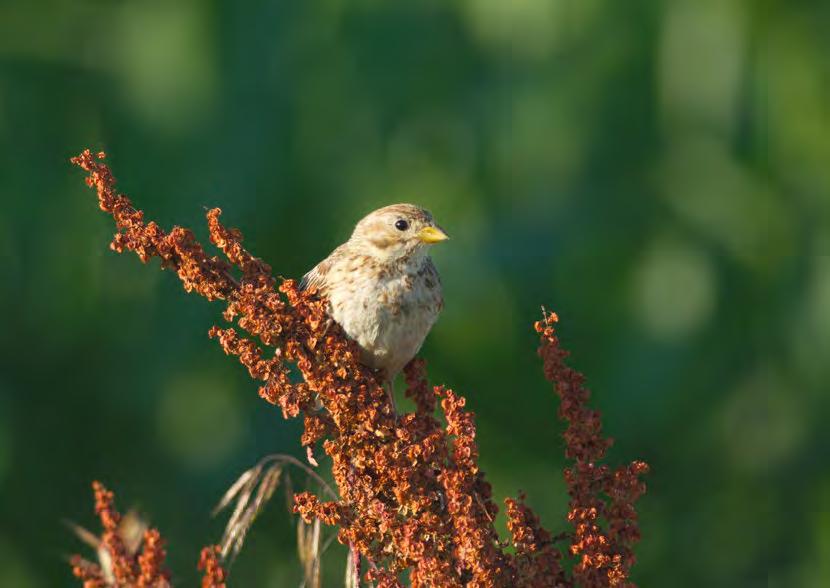
16 Our Farms
Commitment indicator Progress during 2021/22 Enhance and protect the natural environment We protect all natural and seminatural habitats on-farm. In addition, we have 2,769 ha of protected areas with detailed management plans: • Formal covenants – 1,762 ha • Ingleby protected – 1,007 ha • 2.7% of Ingleby’s area is formally protected 10% natural habitats • 31,506 ha of environmental area (Not including our three forests in Romania) • 31 % of total area 1% water habitats • Waterbodies and wetland - 2,736 ha • 2.7 % of total area Monitor threatened species and ecosystems Ingleby monitors all species found on-farm through bird and insect monitors, surveys of protected areas and vegetative areas, and chance encounters. So far, we have identified 91 significant species on our farms and forests – those with a high conservation status and using our farms as breeding, feeding, or migratory habitat: • 58 birds • 5 insects • 10 mammals • 13 plants • 1 reptile • 2 amphibians • 1 arthropod • 1 fish Our Nature Protect and enhance biodiversity
Wood lark on our land in Romania

17 Our Farms Contents Commitment indicator Progress during 2021/22 Zero harm work culture • LTIFR (Lost Time Injury Frequency Rate): 2.76 2% of time spent in training • 2.5% of total hours spend in training Balanced gender diversity • 36% women employed across all of Ingleby’s operations Support and engage with local farming and environmental groups • Donations
Commitment indicator Progress during 2021/22 Climate positive • Combined crop GHG emissions were 378 kg CO2 e/ha, a 46% reduction
to the benchmark of 704 kg CO2
• Reduced fertiliser use, and increased use
cover crops and reduced/no-tillage systems
this result
Combined horticulture net emissions are climate positive
kg CO2 e/ha Zero waste and zero landfill Ingleby’s waste management system, developed by Ingleby Lithuania, is being rolled out globally. Its five steps area: 1. Identify – conduct a waste review 2. Sort - install systems to sort waste in workshops, offices, and fields 3. Measure – measure waste by category 4. Reduce – find solutions to reduce the largest sources of waste 5. Share - systems, lessons, and obstacles with Ingleby and the wider community Transisition to renewable energy • 3% biodiesel (total energy) – 5% of diesel used on-farm • We have increased our use of renewable electricity from 61% last year to 67% in 2021/22 – 60% grid and 7% on-farm solar Our Climate Farm for a greener future Our Communities Grow our people and communities
2021/22: 105,741 USD
compared
e/ha in 2019/2020, as shown on page 58
of
have all factored into
•
at -478
We are long-term owners of land. As of 30 June 2022, we own and manage 42 farms and forests across nine countries and four continents. Our worldwide number of hectares adds up to 101,637 hectares of which we protect 31% as natural habitats, including 2.7% as water habitats. We own and manage arable land, pastures, horticulture and forests.



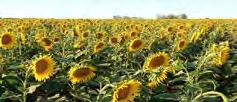

Avocados Seeds Table grapes Blueberries Milk Cattle Row crops Sheep Mixed forestry Pistachios 18 Our Farms
Argentina 12,519 hectares 10 farms Peru 2,017 hectares 2 farms Uruguay 27,217 hectares 7 farms California, USA 1,825 hectares 1 farm Contents
Our Farms

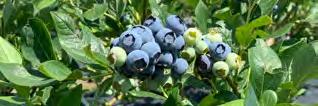



19 Our Farms Romania 19,832 hectares 3 farms, 3 forests Australia 21,688 hectares 9 farms Latvia & Lithuania 9,805 hectares 3 farms New Zealand 6,735 hectares 4 farms Hectares by region Europe 29% 28% 43% Hectares overview Australasia Americas Cropping Intensive grazing Environmental Production forests Infrastructure 46% 14% 31% 8% 1% Contents
Our certifications
As farmers, we play an important part in solving some of the most pressing global challenges of today. We want to farm with nature – not against it. We believe farming done right can help the planet, and we aim to live up to this task every day, in everything we do.
Our high internal agricultural and social best practices mean that we do not guide our operations using external certifications. Instead, we carefully select certifications to provide assurance to our external partners and customers of our farming practices. Below we proudly present a selection of our current certifications.
USDA Organic Integrates cultural, biological, and mechanical practices that foster cycling of resources, promote ecological balance and conserve biodiversity.
EU Organic Encourages responsible use of energy and natural resources, maintenance of biodiversity, preservation of ecological balances, enhancement of soil fertility and maintenance of water quality.
Certified Humane Covers the animals’ entire lifetime. Requirements relate to nutritious diet without antibiotics, animals raised with shelters, resting areas, sufficient space and ability to engage in natural behaviour.

Grasp Assesses social risks in primary production.
Certified Natural Beef
Certifies the entire production process all the way through packing and labelling. Compliant with food safety and traceability requirements.
GLOBALG.A.P.
Enhances agricultural practices by minimising the environmental impacts, reducing chemicals use and ensuring a responsible approach to worker health and safety as well as animal welfare.
SPRING SPRING
Sustainable Programme for Irrigation and Groundwater use certification is an add-on to the GLOBAL G.A.P. certification. It entails an annual water audit and best practices in water management.
SMETA

Aligns social audit standards and monitoring practices to ease the auditing burden on suppliers by sharing reports and driving improvements in supply chain labour standards.
Angus Uruguay Verified Guarantees meat comes from animals that never received antibiotics, hormones or proteins of animal origin during their lifetime.

®

FSC


The Forest Stewardship Council® is an international nongovernmental organization that promotes environmentally appropriate, socially beneficial, and economically viable management of the world’s forests.

20 Our Farms
Contents






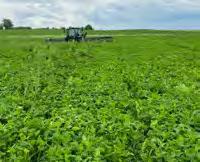

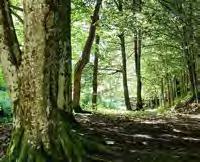







Pistachios USA Forests Romania 21 Our Farms Blueberries Peru/Romania Avocados Peru Table grapes Peru SPRING SPRING Peru - test plot Peru - test plot SPRING Stevia Peru Beef Uruguay Pagiriai farm Lithuania Contents
Victoria, Australia
High yields over 6 tonnes/hectare for wheat and barley continue for the third year in a row
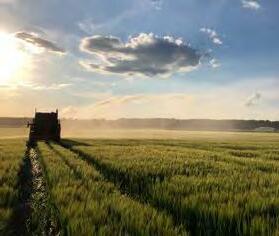


New Zealand 23 additional hectares of riparian buffer fenced and planted or left to naturally regenerate

Argentina 165% improvement* turns our crop net emissions climate positive


Peru

Sustainable farming trial performed on-farm with 33 tests on biological pest control, organic inputs, nutrient recycling etc.
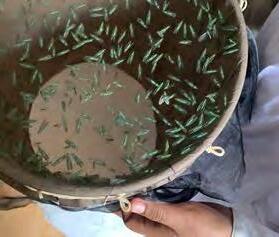
Chapter
Lithuania Irrigation implemented for 432 hectares with hose-reel irrigator *compared to benchmark
Latvia

Synthetic pesticide use reduced by 16%, compared to the 3-year benchmark*

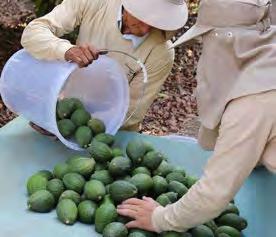
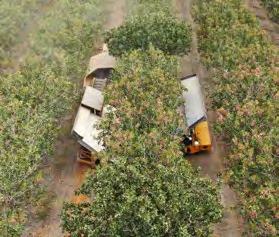
Sustainability data
Each of our farms and forests continuously collects and reports heaps of sustainability data, which we use for assessing our progress towards our regenerative commitments. A few samples of these data are presented here.


Uruguay Breeding of fine merino sheep with 18 micron in fibre diameter
 Romania farms Climate positive blueberry production for the 2021 season
Romania forests Achieved Forest Stewardship Council (FSC®) certification
USA
91% of diesel used (and 77% of all fuel) was biodiesel this last season
Romania farms Climate positive blueberry production for the 2021 season
Romania forests Achieved Forest Stewardship Council (FSC®) certification
USA
91% of diesel used (and 77% of all fuel) was biodiesel this last season
Contents
*average pesticide use of 2016-2018



24 Our
Contents
Soil
Nutrient cycling
The energy from the sunlight enables the photosynthesis within the plant cell, where atoms of 6 CO2 molecule and 1 H2O molecules are rearranged to 6 molecules O2 (oxygen) and 1 C6H12O6 molecule (sugar).
The plant releases the oxygen back into the air, while the sugars are stored in the plant or exuded (along with other beneficial compounds like nitrogen) via the roots to soil microbes. So, while our crops grow above ground, they also produce food for a multitude of biological soil organisms below ground. The more plants that continuously feed the soil microbiology, the healthier the soil.
In exchange for the food produced for the soil organisms, they provide minerals and nutrients to the plants. A nutrient cycling has started.
We believe in a correlation between the level of soil health and the quality of nutrients being cycled: A nutrient-rich soil yields a more nutrient-rich plant, yielding a more nutrient-rich crop; ultimately providing better health to the person who consumes the crop. Empirical data and research are needed to support our belief.
Another factor widely considered as one of the most important metrics of soil health is soil carbon. It refers to the amount of carbon (primarily in organic matter) found in the soil. Generally, the more soil carbon, the darker color of the soil and a rich, earthy smell.
By growing cover crops between cash crops, we extend the period where our soil benefits from the sugars provided by the photosynthesis. Our soil also benefits from the organic matter from plant residues which slowly decomposes and integrates into the soil, storing carbon in the soil. This method is dramatically more effective when combined with no-till as tilling would nullify the efforts by releasing carbon to the air.
ARABLE

ARABLE AREA IS NO-TILLAGE
ARABLE AREA IS MINIMUM-TILLAGE
ARABLE AREA HAS DOUBLE CROPPING
25 Our Soil
Most life on earth depends on photosynthesis, a process powered by rays of sunlight. Plants use the sunlight to synthesize sugars from carbon dioxide and water. These sugars are then cycled through soil, plants, animals and people.
48 DIFFERENT CROPS GROWN 20%
AREA WITH COVER CROPS 54%
45%
13%
Contents
To till or not to till
Today, we see

detrimental effects that centuries of excessive tilling practices have had on soil quality and health. Heavy tilling has
method of warming up the soil prior to seeding and burying weed seeds, but it comes with a price.
Ruined soil structure, increased risk of erosion, releasing of sequestered carbon back into the atmosphere, and destroyed soil microbiome habitat, are just some of the harmful effects of heavy tilling.
An alternative to conventional tillage practices is to stop cultivation of the soil, which is a farming practice known as no-till. In this practice, you seed directly into the residue of the previous crop or cover crops instead of first preparing a seedbed. To avoid the damaging effects of turning the soil, a specialised seeder is needed. This seeder slits through the residue and soil, and then a double-disk opener widens the slit to insert the seed into the soil. By seeding directly into crop residue, the soil is never left bare which is helpful in retaining soil moisture in dry areas.


This practice also minimises the destruction of habitats for underground life, like the earthworms, and prevents them from being eaten by birds when they are turned over the soil surface.
By wiggling their way through the soil, earthworms allow oxygen to be transported further down the soil profile and help stabilise soil organic matter. This makes the soil structure sponge-like, enabling it to hold more water and drain up to ten times faster than soils without earthworms. So, we wish to protect our earthworms as much as possible.
Certain crops are not suitable for no-till seeding, especially in heavy clay soils. This is where strip-tilling comes in. It offers the benefits of tillage, while minimising the damage done to the soil. In strip-tilling you only turn the soil in the strip you seed, while leaving the area between the strips untilled and intact.
At our farms, 45% of the cropping area are operated in a minimum-till system while 54% are operated as no-till systems. This totals 42,626 hectares of arable cropping area in the 2021/2022 season. Much of this area was previously conventionally tilled and by converting it to no-till or minimum-till, we restore the health, carbon storage and resilience of the soil.
26
Our Soil
the
been an effective
No-till seeder
Contents
No-till seeding
Improving soil health through sunlight
An effective photosynthesis converts carbon dioxide and water to carbohydrates which are cycled through the plant via root exudates to the soil. Regenerative farmers like us have a keen interest in continuously increasing the health of our soil. So, we strive to “catch” as many rays of sunlight as possible to maximise the positive effect on the soil. Our two main tactics are to extend the time periods of living roots in our soil, and to increase the surface area of plant foliage.

By growing cover crops between cash crops, we extend the period where our soil microbiology benefits from the sugars and oxygen provided by the photosynthesis. This goes well with the regenerative principle of always
keeping the soil covered to decrease moisture evaporation and shade the soil from direct sunlight. Selecting a diverse mix of cover crops increases biodiversity and gives the benefit of different shapes of leaves to catch rays from different heights and angles.
To increase the surface area of plant foliage, we have on-going trials of stacking layers of foliage, for example by introducing trees into fields of row crops. This way, we are gaining additional benefits from the nutrients generated by photosynthesis in the crown of the tree. Our initial trials of this kind of agroforestry are in Romania where we are testing cherry trees, walnut trees and plum trees as an integrated part of selected fields on two farms.

27
Our Soil
Plants convert light energy from the sun into chemical energy which synthesizes carbohydrates to feed the plant itself, but also organisms in and around the root system. The more plants that feed the soil microbiology with these carbohydrates, the healthier the soil.
Contents
Newly planted rows of plum trees integrated into the fields on our Tormac farm in Romania
All about water

Nothing grows without water. Often, the quantity and timing of the natural rain fall are not optimised for farming, hence a need for effective water management. The critical necessity of water also calls for a focus on creating and protecting water habitats on our land.
To supplement natural rainfall, we irrigate with ground water, surface water or retained rainfall. Irrigation stabilises and increases yield, ensuring the farms’ ability to endure extreme weather conditions like prolonged drought. Irrigation also improves nutrient use efficiency as plants are more efficient at taking up nutrients when the soil is moist. On our cropped land, irrigation enables us to increase the number of crop rotations per year as harvest can be brought forward.
Water use
We irrigate 8,175 hectares across Argentina, Australia, Lithuania, Peru, Romania, USA and Uruguay. Irrigated area equals 17% of our total crop and dairy area. In the fiscal year 2021/22, we applied 38,826 megalitres of water to our fields and orchards (which equals 475 mm per crop).
We do not exceed the annual renewable supply of water, always maintaining a water surplus, whether it comes from surface water or groundwater.
Water habitats
We have an obligation to protect water and aquatic habitats for ourselves, our neighbours and future generations.
Water habitats are epicentres of biodiversity and are an integral part of our long-term Farming with Nature approach. They support healthy thriving ecosystems on our farms, benefiting both production and conservation.
Where possible, we create additional water habitats by digging shallow scrapes of variable size, shape and depth, forming diverse aquatic habitats for a variety of animals and plants. Currently, water habitats make up 2.7% of our total land area: 2,736 ha.
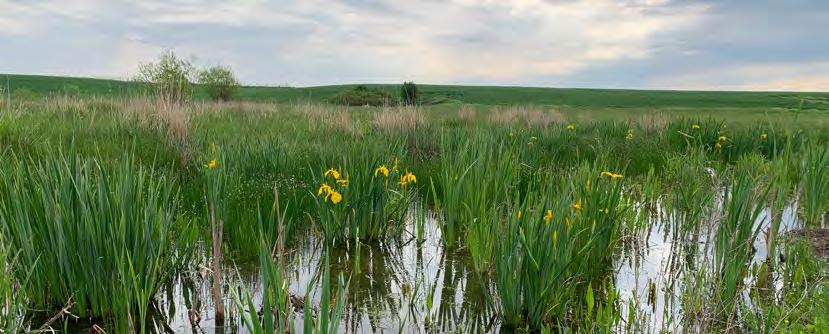
28
Our Soil WATER HABITATS
Contents 36% 33% 24% 5% Waterbodies Channels Wetlands Temporary waterways Rivers Springs
Pond on Tormac farm in Romania
Recycling water
Adverse weather events are becoming more frequent and more severe due to climate changes. A strong rainstorm can off-load significant amounts of water, sometimes more than the soil can hold – or faster than the soil can absorb it – hence flooding the fields. So, increasingly a good drainage system becomes important.
In Romania, we have completed two projects which not only drain the fields from excess water, but recycles that water for irrigation at a later stage. See details to the right.
Efficient use of water resources
In Peru, we have undertaken trials to reduce the water use of our irrigation system. We sowed cover crops and spread mulch from prunings to cover the soil and reduce water loss through evaporation.
During the 2021/22 season, we reduced water use in the avocado crop by 5% compared to 2020/21 and by 11% compared to 2019/20. We will continue this trial over the coming year, expanding to other crops in the orchard.
SPRING certification

In Romania this year, our blueberry production obtained the Sustainable Programme for Irrigation and Groundwater Use (SPRING) certification, which is an add-on to the GLOBALG.A.P certification. Currently, we hold SPRING certification in Peru as well.
Green Gate hazelnut project
• Hazel trees are irrigated by an in-line drip irrigation, a modern efficient system which minimises water use
• Extensive drainage system across orchard directs surface flows and excess soil moisture back into irrigation ponds – recycling water for later use
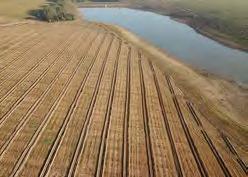
• 851,500 m3 water capacity storage across three ponds for irrigation
Tormac farm project
• New irrigation and drainage project completed 2022
• Total irrigated area 403 hectares spread across five fields
• Fields irrigated with one fixed centre pivot and two mobile centre pivots

• One 26-hectare irrigation lake with a water capacity of 840,000 m3
• Extensive drainage system recycles water back from the fields into the lake
29
Our Soil
Contents
Pivot irrigation in Uruguay
Growing food

With our 150-year perspective on farming, we aim to increase the nutritional value of our products and the amount of calories that we produce, without expanding the area of land used for farming and with a decreasing amount of synthetic inputs.

Our teams work year-round to produce sustainable seeds, grains, vegetables, fruits, nuts, meat and milk of premium quality. During recent years, we have become specialists in growing high-quality, nutrient-dense crops such as blueberries, avocados and pistachios.
This year, we grew 48 different crops, compared to merely 11 crops, 11 years ago. The increasing trend in number of crops is a deliberate development from our side. It ads complexity to our production, yet it yields powerful benefits to our soils, water use and biodiversity. It even helps in reducing synthetic inputs. The complexity of running such a diverse production is small compared to the benefits we gain.
30
We believe that our focus on creating healthy soil will not only improve our yields, but also create healthy plants and products.
Our Soil
We believe that there is a correlation between fertile soil, healthy plants and the quality of the grain, fruit or nut.
Contents
Chickpea and barley
During 2021/22, our food production totalled 201,587 crop tonnes, or 587,214 million calories. This can feed 643,522 people for a year based on an estimated daily intake of 2,500 calories per person.

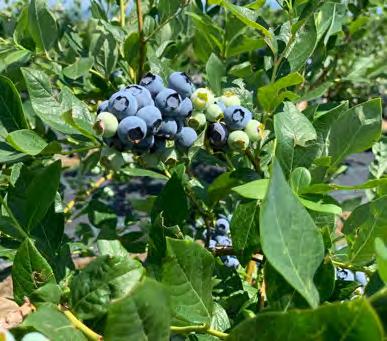
Calculated by hectares, we can feed one person for an entire year on 0.13 hectare of land, equal to 1,300 m2 or about two basketball courts.

Since we started measuring, we have increased our tonnes of food produced per hectare by an average of 2% per year for crops and 4% for meat and milk. At the same time, we have reduced pesticide use on the cropping and horticultural productions by 7%, and applied 10% less synthetic fertilisers against the three-year benchmark (2016/17 – 2018/19).
The fact that our yields are increasing, while our synthetic inputs are decreasing, must be related to our approach of farming with nature. Some effect is also derived from increased efficiency in water use, fertiliser use and technology. We are excited to see if this encouraging correlation will become even more significant as we continue to learn from our many fields trials during the past few years.
Our Soil 0 10 20 30 40 50 60 2021/22 2020/21 2019/20 2018/19 2017/18 2016/17 2015/16 2014/15 2013/14 2012/13 2011/12 2010/11 Seeds Fruits Vegetables Others Beets Legumes Oil seeds Cereals CROP DIVERSITY Contents
Reducing synthetic pesticides

To accomplish this, we need diverse crop rotations and cover crop mixtures in between cash crops. This year we have increased our crops grown to 48 species compared to 11 in 2010/11. This means we grow more than four times as many cash crops than eleven years ago. We furthermore have 20% of our cropping area planted with cover crops every year.
The major challenge of our synthetic pesticidefree commitment in a regenerative farming system is to control weeds. As we are reluctant to heavily disturb the soil, we are more limited than organic farmers in weed control. The common strategy is to apply herbicide in these no-till systems, but in Australia, Argentina and Uruguay, where no-till farming is the norm, we see increasing issues with herbicide-resistant weeds.
In Argentina, we have managed to achieve identical yields from corn in pesticide-free fields compared to sprayed fields. This is from having a dense growth of cover crops that are terminated by roller-crimper and which the corn is planted directly into.
Spot spraying combined with weed recognition technology are being tested and implemented in our European farms and Western Australia.
Another tactic we use in Peru, is biopesticides. Here we rear beneficial insects and cultivate beneficial bacteria and fungi, which upon release compete against the pests.
In 2021/22, we reduced our synthetic pesticide use by 7% compared to our benchmark, which is the average use of the three seasons between 2016/17 – 2018/19. We did, however, use more synthetic pesticides than we did in 2020/21, where we achieved a 23% reduction compared to the benchmark. The use generally fluctuates with local weather events, plant growing conditions and pest pressure. For each farm, we have a plan in place for reducing our use further.
We hope to see a faster decrease in pesticide use going forward as many of our successful pesticide-reduction field trials are currently being implemented on whole-farm scale, hence yielding a much larger effect. In June 2021, our farm in Lithuania initiated a several year long transition into certified organic status.
32
Our Soil Contents
Regenerative farming is the overarching strategy for us to become independent of synthetic pesticides. These practices revolve around increasing biodiversity in the fields and in the soil. This naturally rich ecosystem will support a myriad of beneficial organisms that will maintain a balance in our production and help us against pests and weeds from taking over.
Field notes from Peru


A central part of Ingleby Farms’ strategy in achieving our 2030 synthetic pesticide -free goal is natural biological pest control using beneficial insects, bacteria and fungi. Attentive to nature’s way of dealing with pests, we accumulate knowledge on-farm, enabling us to replace synthetic pesticides with strategic biological supplements.


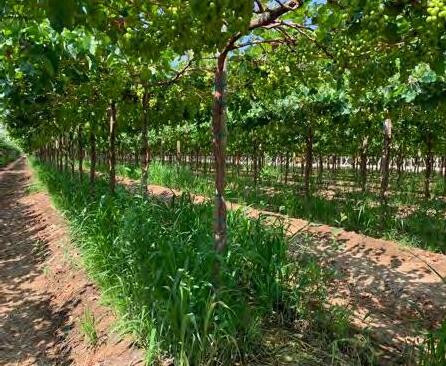
Field notes from Argentina
This is our 3rd year performing this trial of late corn seeded just after rolling of cover crops. No applications of pesticides for 18 months. We have seen no differences in corn yields compared to corn sprayed with pesticides. More weeds are present, which could become a challenge.


33 Chapter Our Soil
Pesticide-free corn after hairy vetch cover crop at San Ignacio farm
Corn planted after hairy vetch cover crop at Don Aurelio farm
Production of Trichoderma bacteria at El Cholocal farm
Assessing root growth and health
Table grapes orchard with lush cover crops
Contents
Rolling hairy vetch at San Ignacio farm
Farming smarter with technology
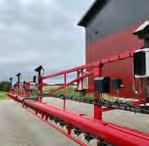
With innovation, often comes technology. Our most effective technology, enabling us to apply the smallest amount of herbicide necessary, is the spot sprayer. Combined with weed detection camera and software, it identifies weeds in the field and only sprays exactly where it is needed.
We operate this type of sprayer in Romania, Latvia, Lithuania and Western Australia, and we see herbicide reductions of up to 80%. This type of spraying keeps getting more promising with improved weed recognition technology.
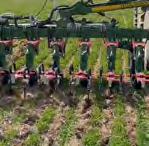
Ceasing spraying abruptly will leave a void for supressed weeds, pests, bacteria and fungi to thrive and prosper without any competition, ultimately risking the harvest. We want to eliminate our synthetic pesticide usage completely, yet we must advance gradually, while at the same time rethinking how we farm. Implementing regenerative farming practices will be our strongest tool in this fight for independence of pesticides.

One of the many challenges of regenerative farming is to minimize soil disturbance, so terminating cover crops by tillage – as you would do in organic farming – is not a viable option for us. A solution might be mechanical termination of cover crops by crushing them with a roller-crimper. We are testing that in Argentina and Uruguay.

The roller-crimper terminates cover crops by a drum that mows down the plants, with blades cutting the stems. Terminated cover crops are then left on the soil surface to decompose while they physically protect the soil from erosion and prevent weed seeds from germinating. The tests are looking promising, so we expect the rollercrimper to be an important tool in our no-till systems in Uruguay and Argentina to achieve our 2030 goal.

34
Camera for spot-spraying
Seeder
Roller-crimper
Row-cleaner
Our Soil Contents
Innovation in our farming practice is crucial for reducing our pesticide and fertiliser use. As none of our farms are identical and there are no easy fixes, we carry out tests and trials on all farms, determined to find smart ways to reduce our dependence on synthetic pesticides and fertilisers.
Another successful test of machinery to reduce pesticides was completed on our farm in Lithuania this year. We saw great results from a top-cut collector, which literally cuts and removes the top of the weed that grows taller than the crop. This way, the weeds lose its flowers and seeds, preventing it from reproducing – and that causes a significantly lower need for herbicides in the following growing cycles.

In Peru, we have started using a vertical sprayer. Its tower-like structure enables us to successfully apply an even coverage of organic pesticides against scale insects – even amongst the top branches of the avocado trees.

When it comes to decreasing fertiliser use, we obtain remote images from satellites, aircrafts and drones. With this intelligence we can create precision fertiliser application maps, only applying fertilisers to the areas that need it.



A small, yet effective tool used on our farms in Latvia, is a digital beehive monitor. This little device transmits data like weight, temperature and humidity to easily assess the health of each hive colony without disturbing them. With a vast number of hives, this continuous data transmission saves a lot of time for the beekeeper. Time that can be spent on the hives that need attention.
Although we reap many benefits from technology, we still believe that the best tool for healthy fields is the farmers feet on the ground.

35
Vertical sprayer
Precision application map
Drone for mapping
Digital beehive monitor
Our Soil
Contents
Top-cut collector
Our Animals



36
Contents
We raise our livestock outdoors
Our sheep, cattle and horses are open-range and grass-fed, grazing on extensive native or seeded pastures, or fodder crops such as kale, beets, lucerne, clovers and vetch.
We rear more than 170,000 sheep, 30,000 cattle and 4,100 dairy cows. Our sheep are mainly Perendale, Romney and Finnsheep crossbreeds, Texel and Gottland crossbreeds and Merino. Our beef cattle are mainly black Aberdeen Angus and our dairy cows are Holstein-Friesians. In Latin America, we also have workhorses used by the gauchos for moving the cattle.
As part of our regenerative agriculture practice, we are increasingly integrating animals into crop and seed productions by grazing residues and cover crops. Strategic grazing can stimulate forage photosynthesis and maintain the natural condition of productive pastures, while herbivores are an integral part of the carbon cycle, contributing to healthy soils.
Research shows that meat from pasture-fed livestock systems have multiple benefits, such as higher levels of Omega-3 and vitamins A and E, superior meat flavour, marbling and tenderness.
With balanced breeding that supports the health, feed efficiency, meat and wool quality, we are actively refining our herd genetics for animals that are best suited for our local farm environments.
We follow strict ethical practices on how we treat and handle our livestock to ensure the best animal welfare, and ultimately, the best meat, milk and wool.
Good livestock husbandry needs a dedicated, hands-on team of people living on-site, creating what we call “living farms”. We employ people that have a gentle passion for caring for animals.

37 Our Animals
26 FARMS WITH ANIMALS 30,946 BEEF CATTLE 6,513 DAIRY CATTLE (milking and non-milking dairy cattle) 171,198 SHEEP 36,539 HECTARES GRAZING AREA 6,435 TONNNES MEAT, MILK AND WOOL Contents
Sheep in seed production

Over the past two years in Latvia, we have integrated our Texel/ Gotland cross-bred sheep into our crop rotation. This works especially well with our seed production as plenty of feed is left on the field after seed harvest.
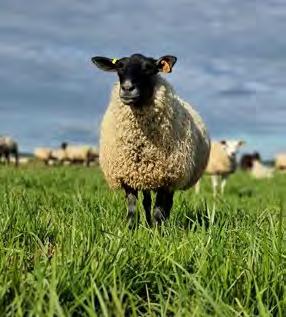

By grazing seed production fields, we use less diesel, machinery and manpower, which are otherwise required to mow the grass or clover. The grazing sheep also reduce our synthetic pesticide use by grazing weeds and supply the following crop with natural fertiliser for improved yields.
Our flock size has reached close to 1,000 ewes, producing 1,400 lambs this spring.
Spring starts with lambing when animals are turned out as soon as the grass starts growing in April or May. The first part of the grazing season is mostly spent on permanent grass fields. In addition, we also graze some red and white clover fields, which are out of seed production and left to sheep for an extra season. Due to the high protein level, clover fields provide a strong growth rate in lambs. Grazing clover fields under crop rotation also has the benefit of decreasing our use of dewormer as internal parasites cannot overwinter in these fields – as they can in permanent pastures.
Come summer, weaning is over, and the animals graze freshly harvested fields. In late autumn, they graze fields where cover crop mixtures are preparing the seedbed for the next season.
Our sheep are kept indoor and fed silage during winter. The silage is made from the same grass seed and clover seed fields, and for bedding we use straw from our wheat and barley.
38
Our Animals Contents
Original Black Aberdeen Angus
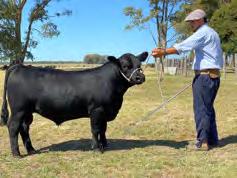
Our herd has been bred over many years to adapt to the natural conditions of our land. The original Aberdeen Angus has a more moderate frame-size, which is better suited for the natural grassland production we use in Uruguay. Mainly because the moderate framesize makes it easier for them to grow on grass only.
Certified Humane
Animal welfare has always been a top priority for us. Therefore, we are still proud to being the first beef producers in Latin America who obtained the “Certified Humane – Raised & Handled” certification for our Black Aberdeen Angus beef.

The certification, initially awarded by Humane Farm Animal Care (HFAC) September 2020, covers the animals’ entire lifetime and requires that:

• All animals must be free to move and not be confined.
• All animals must be able to exhibit natural behaviours.
• All animals must have sufficient protection from weather elements and live in an environment that promotes well-being, including daily access to pasture.
• Additives such as antibiotics, hormones, growth promoters and animal by-products are prohibited.
• Managers and caretakers must be thoroughly trained, skilled and competent in animal husbandry and welfare.
The program also certifies animal welfare practices at the processor’s facilities including transport and handling. This means that the whole supply chain from the animal is born until it is slaughtered, operates with good animal welfare procedures.
For this reporting period, we are pleased to report, that we are now entitled for the “grass-fed” add-on certification.

39
Our Animals Contents
We rear black Aberdeen Angus in Romania, Argentina and Uruguay. In Uruguay, we breed them entirely on natural pastures and finish them on seeded pastures. They spend their entire lives roaming the pastures as they were meant to do.
Rearing dairy cows in a no-till system
Clovelly Dairies is Ingleby Farms’ award winning 3,575-hectare dairy farm located in Tasmania producing 25.2 million litres of milk annually from a herd of 4,000 Holstein-Friesian cows.


The soil we farm here is a combination of sand and sandy loam. To build healthy, living soils we need to incorporate organic matter.
By increasing the organic matter in the soil, we can benefit the physical, chemical and biological fertility. The organic matter becomes a food source for the microbes and small animals in the ground, while also functioning as a reservoir of nutrients required for the pasture to thrive.
It also influences the water holding capacity and is a major enabler of movement of nutrients between the soil and the fine root hairs of the plants.
Sand is prone to erosion because of its naturally low organic matter content, with wind being the greatest cause of erosion. Sand also has a low water holding capacity which results in shallow root zones. At Clovelly Dairies, we run permanent pastures in a no-till system, which prevents wind erosion. The addition of organic matter increases the soil’s natural defense against erosion.
We are creating compost on-farm by collecting the effluent solids that have been separated at the dairies and the used bark bedding from the calf sheds. Incorporating and regular turning of these products, traditionally seen as waste, yields a rich compost that can be applied to areas identified to be at risk of erosion.
Bobby (male) calves are usually considered a by-product of milk production, but Clovelly is among a handful of farms (less than 1% of Australian dairy farmers) who choose to raise bobby calves through to 12-18 months for high quality and ethical dairy beef production.

40
Our Animals
Contents
Beneficial beetles
The presence of dung in pastures and fields creates temporary hotspots in earth-worm distribution with up to four times more earthworms aggregating beneath dung and burying nutrients deep into the soil profile. Dung also attracts a myriad of insects, some of which are beneficial, like the dung beetles. They are a sign of a healthy and productive land, improving soil quality and ultimately production capacity of the land.
Dung beetles need fresh healthy manure to lay their eggs in and complete their lifecycle. The three main types of dung beetle:
• Tunnellers – dig underneath the manure, moving pieces down into the soil profile where the eggs are laid
• Dwellers – dig into the pat and lay their eggs above ground
• Rollers – roll up dung balls and transport them off to their burrows where they bury them underground with a single egg per ball.
Dung beetle benefits
Dung beetles provide many services to the soil, but also indirectly to our livestock health on the land.
Soil fertility

Dung beetles search out and bury the highest nitrogen portions of dung deep in the soil profile.

The beetle larvae consume 40-50% of the dung, leaving the rest to feed above and below ground biodiversity. This builds soil carbon and creates a rich humus.
Soil aeration and water management
Similar to earthworms, the tunnelling from dung beetles aerates the soil, improving soil water infiltration and storage which increases the water available for plants.
Fly control
Dung beetles move fly eggs and brooding sites below the soil, thus breaking their life cycle. Additionally, rollers excrete a chemical which repels flies from laying their own eggs and dweller beetle larva prey on fly larvae. Our livestock benefits from a lower population of flies, partly because of the lower level of annoyance, but also because fly larvae can become a health issue if laid on livestock skin.
Gastrointestinal parasite control
Dung beetles also break the life cycle of gastrointestinal parasites, whose eggs are found in the dung of their host, preventing them from being ingested by our live-stock again.
Dung beetle management
Unfortunately, livestock dewormers and their residues in dung kill dung beetles. Therefore, we prefer to deworm our livestock in late autumn or winter - when the beetles are dormant.
41
We want to integrate livestock into as much of our land as possible due to the cascading effects on biodiversity and ecosystem function that comes from their dung.
Our Animals
Contents
Dung beetle. Photo credits: iStock
Our Nature

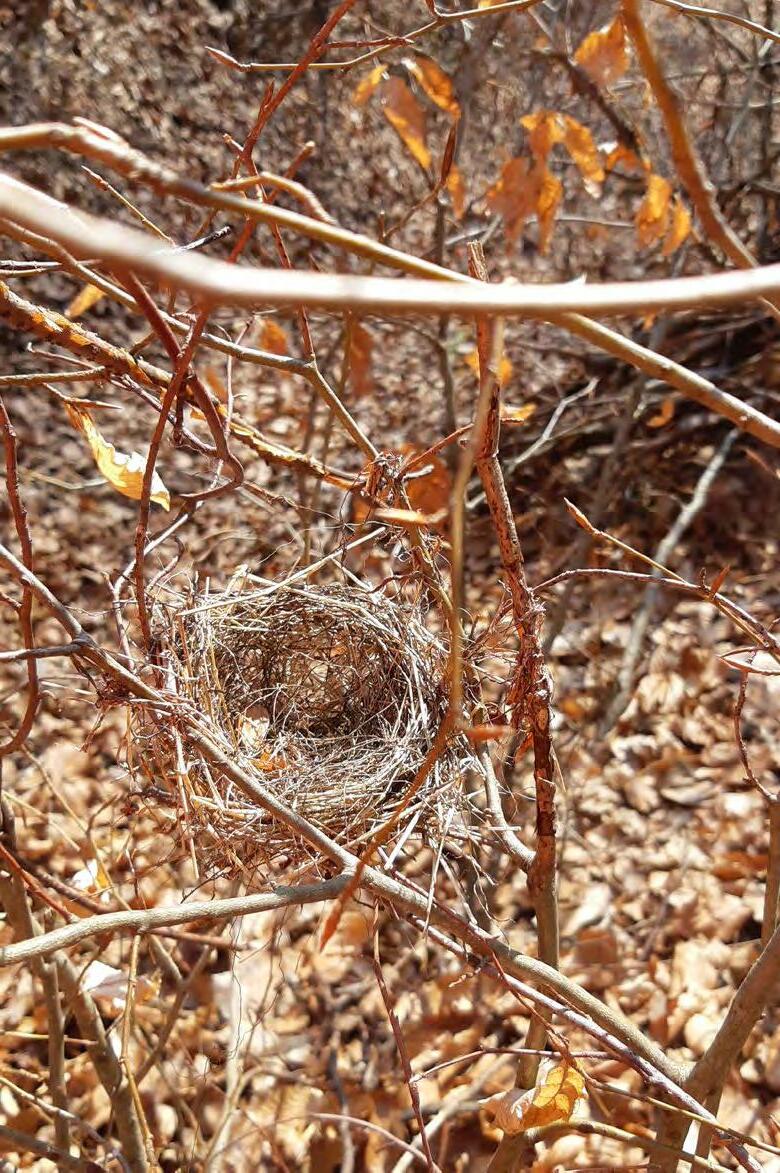

42
Contents
We take nature seriously
Nature is not just a pretty add-on to our farms. Biodiversity in all its forms is vital to improving our farms and food production and maintaining our planet’s resources and ecosystems.
Biodiversity provides services which help to cycle nutrients, form soil, sequester carbon, store and filter water, provide pollination and control pests. We also believe that biodiversity makes our production systems more resilient to economic and environmental stresses, including the effects of climate change.

Agriculture has been said to be the main driver of biodiversity decline due to chemical use and habitat destruction. We want to show that farming is part of the solution, improving existing natural habitats and increasing the area by creating new habitats in areas unsuitable for production.
We never clear forest for farming purposes. Instead, we continually seek to provide habitats for all species and promote connectivity between protected areas in our farming landscapes.
We embrace regenerative practices and are on a journey to phase out synthetic pesticides and fertilisers to avoid their negative effects on biodiversity.
We cherish our soils and make sure to support the myriads of life herein. Diversification in crops together with new varieties and combinations sustain yields. In addition, these actions support our local biodiversity and ecosystems whilst providing more nutritious and healthy food for all.
In fact, 31% of our entire land area is set aside for nature. Farm-byfarm we make “Farming with Nature” plans to ensure that even the most productive farms set aside at least 10% land area for nature.
43 Our Nature 18,540 HECTARES NATIVE PASTURES 9,968 HECTARES OF WOODLANDS 944 HECTARES OF FORMALLY PROTECTED COVENANTS 31% INGLEBY’S LAND IN NATURE 92 SIGNIFICANT SPECIES ON OUR FARMS
Contents
Area for nature
We are committed to increasing the quantity, quality, diversity and connectivity of natural and semi-natural habitats on-farm. All to create a healthy farm ecosystem.
Our goal is 10% natural habitat on each farm. In addition to protecting natural and seminatural habitats on our farms, we retire land less suitable for production as habitat to diversify the landscape.
Restoration
We retire small areas of land from production, focusing on:
• Obvious issues and marginal land (erosion, flooding, high slope, difficult access etc.)
• Underrepresented or missing habitats in the local area (wetlands, grass-lands, waterbodies etc.)
Often, retiring small corners and letting scrub and woodland passively regenerate without intervention, provides habitat for multiple species and removes difficult wet or tight areas from production at little to no cost.
Landscape tools
Landscape tools are used to diversify the landscape in homogenous production areas, bringing benefits for both conservation and production with more complex interactions creating a healthier farm ecosystem.

HECTARES OVERVIEW
44 Our Nature
– row crops, seed crop,
Intensive grazing – improved pasture Environmental
environmental
Production forests
and plantation
Infrastructure –
Cropping
horticulture
– natural pastures and
set-asides
– native
forests
buildings, roads, yards, etc.
ENVIRONMENTAL HECTARES DISTRIBUTION Contents Cropping Intensive grazing Environmental Production forests Infrastructure 46% 14% 31% 8% 1% 9% 57% 22% 10% 1% 1% Freshwater Shrubland Natural grassland Landscape tools Bush/wildwoods Geological formations
Restoration projects
Graudi farm, Latvia –

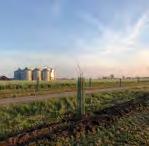


and wavy margins created around existing human-made pond to improve its suitability as habitat for a diverse range of plants and animals.
Landscape tools
DobeleAgro, Latvia and Pagiriai, Lithuania – earth, stone and brush piles created with rocks removed by stone picking, or earth and branches from drainage ditches. Placed in piles, it provides habitat for a variety of reptiles, birds, mammals and invertebrates.

Pagiriai, Lithuania and Graudi, Latvia – buffers are sown with a cover crop and/or wildflower mixture, creating habitat in field margins or used as a buffer between fields and waterways.
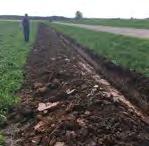
And beetle banks – a metrewide earth bund made with a plough – further improves the habitat conditions for a range of insects, birds, and mammals.


Puketiti Station, New Zealand – Mangaoronga bluffs fenced off with bush left to naturally regenerate creating space for nature and allows more effective grazing of pasture.
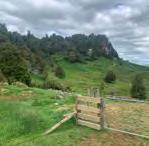
Campo D’Oro, Romania – meadow restoration trial conducted comparing hay spreading and natural regeneration.
Pagiriai, Lithuania and Graudi, Latvia – solitary trees are important stepping-stones for species between core habitats. Shelterbelts and avenues serve dual production and conservation roles, improving conditions for crops and providing habitat for wildlife.
Campo D’Oro, Romania –waterbodies are epicentres of biodiversity. Ponds are created by making shallow scrapes with a variable size, shape and depth to create a diverse aquatic habitat for a variety of flora and fauna. Drainage ditches are made as wide as possible to improve conditions for wildlife and improve drainage.

45
Our Nature
shallow scrapes
Contents
Solitary oak trees, Latvia
Biodiversity monitoring
We are dedicated to enhancing and protecting the natural environment. Therefore, conserving or creating natural habitats and water habitats is important to us – and we monitor threatened species and ecosystems to understand where our efforts are most needed.
Monitoring wildlife in our forests


In Romania, we use an app for collecting all biodiversity and key elements data for our forest operations and certification purposes. All information is hosted in the cloud and updated in real time for all the forest team to use and share. Each user can input their observations, photos and follow-ups directly from their phone.
Data held in app

• Habitat trees – old or malformed trees that we protect for their biodiversity values
• Significant and threatened species sightings and their nests and dens


• Protected, non-intervention and silent area locations
• Camera trap locations and data
• Forest hubs – production areas, species composition, stand age and standing volumes
• Ecosystem types and landforms
• Historical sites or other important areas
• Reporting rubbish and illegal cutting
• Wet areas
• Ant hills
• Tractor roads.
46
Samples of wildlife spotted by our Romanian forest team
Our Nature
Red fox (Vulpes vulpes)
Common toad (Bufo bufo)
– buck
Roe deer (Capreolus capreolus)
Contents
Eggs in bird nest
Increasing population of beneficial insects

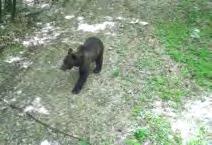
In Peru, we surveyed the native insects present on-farm and created space for feeding, breeding and sheltering depending on their requirements.
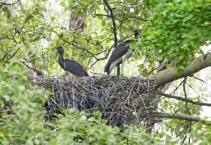
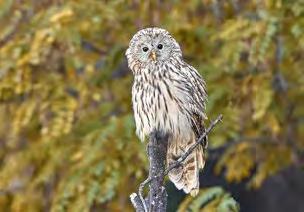
Of particular interest was the threatened stingless bees who are excellent pollinators. Hardier than honeybees, they fly in tougher weather conditions and pollinate a wide range of native plants as well as our orchards. To increase their local populations, we have installed special shelters throughout our farms for them to build their hives in.
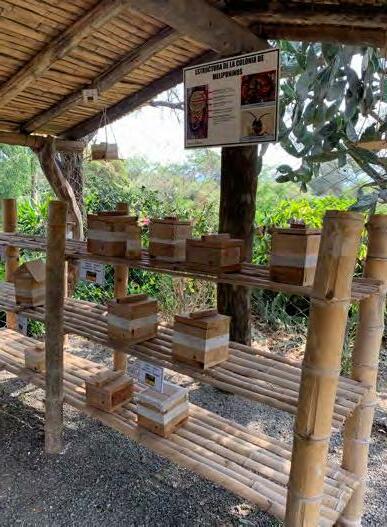

These actions are part of a bigger project of breeding beneficial insects and educating our farm teams about the benefits of insects. This successful project also compliments the initiative to reduce synthetic pesticide use, which decreased by 13% in Peru in 2021/22 compared to our benchmark (2016/17-2017/18).
The beneficial insect project has been expanded to Argentina and Uruguay with work underway to identify local species present, promote their benefits to production and actions to increase their populations.
47
Our Nature
Native stingless bee hives, Motupe, Peru
Roe deer (Capreolus capreolus) – doe
Eurasian brown bear (Ursus arctos arctos)
Black stork (Ciconia nigra) nest
Ural owl (Strix uralensis)
Naturally regenerating forests
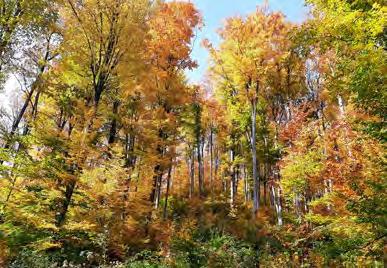
We own three Romanian forests totalling 7,261 hectares. We sustainably manage these natural forests in accordance with the highest professional and environmental standards. Beech, oak, hornbeam and lime make up almost 85% of our forest but we have a remarkable mix of over 20 tree species, thus the forests are more valuable and resilient to climate change.
Key facts about our forests
• Ingleby Romania owns 7,261 ha of forest in three hubs

• Total volume is 2.9 million m3 (400 m3/ha) of standing timber

• Average age of the forest is 75 years
• Average growth/ha is 8.0 m3 (58,000 m3/year)
• Harvesting possibility is 35,000 m3 per year
• Actual harvesting on average is 25,000 m3 per year
• 400 ha are excluded from logging and kept as nonintervention areas for nature
48
Our Nature
Beech Oak Hornbeam Lime/linden Various hardwood Spruce Ash Silver fir Other 0 10 20 30 40 50 Contents
ROMANIAN FORESTS SPECIES MIX (%)
Oak beam project
While the world was locked down in 2020, our forest team started working on one of our long-term ambitions: producing our own high-quality timber from our natural forests. This will be available to order directly from Ingleby.

The project focuses on selected stands of sessile oak (Quercus petraea) in Topoloveni forest which are suitable to produce large sawn beams from 14-34 cm in thickness and 3-6 m in length.

Trees are selectively felled by contractors and sawn on consignment. We then airdry the beams ourselves for 5-8 years depending on thickness in a shed built in one of our forests. We seal the ends of the beams with paraffin wax to slow the process and prevent cracking.
The first trees were felled in 2021 with 885 m3 standing timber assessed. 252 m3 of logs harvested were suitable for beams. From that, 105 m3 of sawn beams were produced with the residues recovered as fuel wood. The rest of the volume was sold as firewood.
In 2022 2,600 m3 standing timber has been assessed, 1,488 m3 harvested as logs, and 450 m3 of beams sawn.
Forest Stewardship Council® (FSC®) certification
At the end of 2021, Ingleby Romania received Forest Stewardship Council® (FSC®) certification for sustainable forest management.
There were no major hurdles for Ingleby Romania to overcome during the FSC® certification process due to our years of exemplary and sustainable forest management.
Ingleby Romania’s strongest point during the certification process was that we devised all the procedures ourselves without the help of external contractors. This way, we were as hands-on as possible at each step of the implementation of FSC® guidelines.
Virtual forestry
In partnership with a local technical forestry company, we have begun investigating the use of LIDAR (Light Detection and Ranging) technology and algorithmic modeling for future forest growth measurement and management.
A special backpack with a LIDAR array scans the forest in real time to build a 3D point cloud of the forest. This data is algorithmically processed to determine species, volumes, log grades and any changes in the forest since a measurement was last undertaken. While still in its early trial phase, we hope to use this sort of digital system to increase the efficiency and accuracy of our forest management systems.
49
Our Nature Contents
Our Communities



50
Contents
Ingleby

The programme was created to bring our farms closer together, while creating a network amongst those who aspire to innovate and create change. Each programme runs for two years, where each pioneer will travel at least once annually to other Ingleby farms or forests. Pioneers are expected to visit 3-5 countries and at least 10 farms, with the intent to see farming from a different perspective.
The first Ingleby Pioneers programme was kicked off with a seminar at the global office in Denmark in May. This year’s pioneers represented dedicated colleagues from almost all the countries we operate in.
Feedback from a few of the first pioneers:
“I was fascinated to see their operations, where they transparently shared their achievements in regenerative agriculture, their contributions in the business, the innovations made, the sustainability of the operation and the challenges and ongoing projects.”
“We had the opportunity to spend those days with more than 20 colleagues, strengthening our relation and connectivity, sharing best practices and challenges at work. We are back in our separate countries healthy and with the satisfaction of having grown as people and professionals.”
“I enjoyed being able to meet other enthusiastic colleagues who are leading their own teams and aspiring to innovate with in their farms. All were welcoming and willing to share their knowledge and passion. It was refreshing to be able to discuss challenges with people who are striving to resolve the same challenges.“
As long-term owners of land, we know the value of investing in our employees. Ingleby Pioneers is about creating pathways for professional as well as personal growth.
51 Our Communities
Pioneers
4,006 TOTAL EMPLOYEES 1,021 FULL-TIME EMPLOYEES 36% WOMEN 36 CHILDREN LIVE ON OUR FARMS 2.5% TIME SPENT IN TRAINING 2.76 LTIFR (LOST TIME INJURY FREQUENCE RATE) Contents
To nurture best-practice sharing and crosspollination of ideas between our 42 farms, we launched the Ingleby Pioneers programme.
Growing our people and communities

Everything we do is linked to our long-term commitment to our farms. We are very ambitious about how we farm and steward our land – and to succeed we need dedicated and skilled people. We believe reaching out and engaging with young people and the broader local communities will help foster an interest in farming and how the land is treated.
Engaging school children
On 9 May 2022, Pagiriai farm in Lithuania opened its doors for 20 school children from a local school in Šėta. The children visited the farm and saw its activities, focusing on the competencies and skills necessary to work in agriculture. The children were also given a tour of the hangars filled with exciting machinery. Finally, they went to the fields to see oat and clover fields as well as irrigation machines.
On 24 March 2022, a team member from the global office in Denmark facilitated a hands-on worm assessment for 23 7th graders from a school in Helsinge. This was considered part of their biology curriculum on soil. The students diligently followed the Ingleby worm assessment protocol in groups of three and compared their results amongst themselves. The teacher is planning for future 7th graders to do the same assessment and continuously build on the data collection.
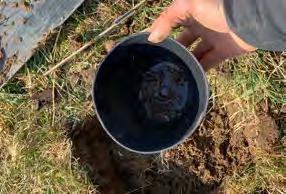

52
Our Communities Contents
Clean-up days

On Earth Day 22 March 2022, our team members in Lithuania organized a spring clean-up day, which is an annual tradition. Enjoying a great spring day, they cleaned up the Ingleby fields and sidewalks near the farm. 700 kilos of plastic, glass, scrap metal, vehicle parts and tires were collected. Although that’s a lot of kilos, it was noticeably less than prior years, hopefully indicating that people are paying more and more attention to the environment.
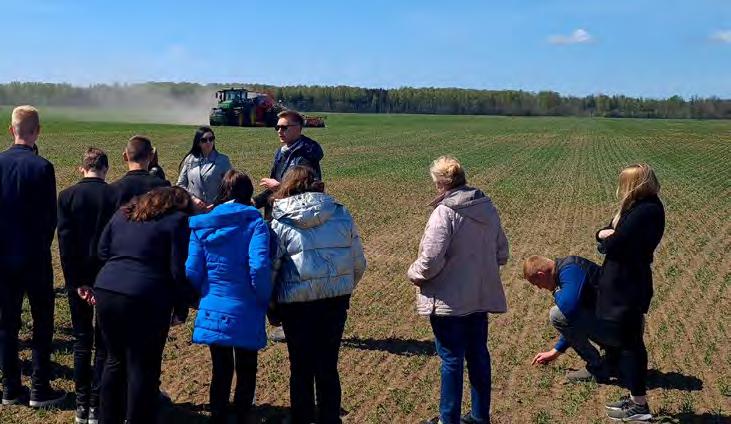
Similarly, our Romanian forest team did a spring clean-up in the Iedera forest in April 2022.
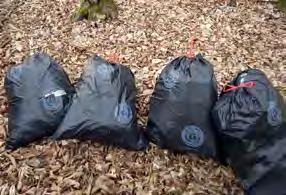
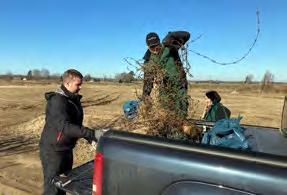

Ergonomic exercises
In Peru, 2,300 team members regularly stop work activities for a break, doing ergonomic exercises and talk about prevention of stress. Each person received a stress ball to encourage on-going practice.
53
Our Communities Contents
We put safety first
To keep safety awareness high amongst our teams, our farm managers host daily or weekly safety briefings. Attendees are team members from the field and managers, and together they discuss the work in the field and identify any high-risk points. These meetings also foster initiatives about safety improvements at our farms.
Our teams report on accidents, but also on near misses as we collectively can learn from these. When we do have an accident, we send out a “Safety warning” e-mail to team members across all farms, describing what happened and how it could have been avoided. These emails are welcomed by the teams and nudge up safety awareness for everyone. They also help us identify potentially unsafe conditions and help
introduce or reinstate working habits where safety and good judgement are core. We are all responsible for keeping our workplace safe, and we want all team members to think safety first. By receiving the warning, team members in other locations can improve in this particular area and hopefully avoid an accident.

We have continued our programme with our safety mascots Farmer Fred and Frida with great success.
The number of accidents worldwide in 2021/22 was 34 accidents. This is only one less compared with 2020/21, unfortunately. We managed to reduce the number of accidents with time off work from 25 accidents in 2020/21 to 17 accidents in 2021/22. This influenced our LTIFR which went down from 3.63 to 2.76.
54
Providing safe work environments for our teams is one
responsibilities. Our Communities 0 2 4 6 8 10 12 Safe Work, Australia LOST TIME INJURY FREQUENCY RATES (LTIFR) Ingleby Farms 2021/22 2020/21 2019/20 2018/19 2017/18 2016/17 2015/16 Contents
of our most important
Safety initiatives


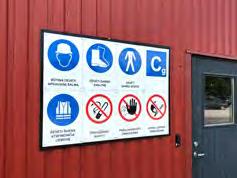
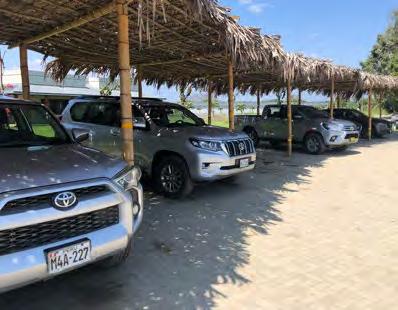


We are continuously implementing and improving our work conditions to make sure our teams stay safe and healthy. An organised workspace is essential for safe conditions. Proper gear and clothing are mandatory. Safety posters keep safety awareness high. Implemented this year, our parking lot safety measure mandates all cars to park front-out which minimises the risk of hitting an object or person when pulling out.

55 Our Communities
Contents
Our Climate



56
Contents
Beyond carbon tunnel vision

Carbon sequestration, while central to global efforts to combat climate change, should not be the sole focus of environmental actions. Carbon sequestration is but one of the many benefits provided by nature to humanity.
Other benefits include soil formation, nutrient cycling, freshwater and oxygen purification, pollination, decomposition, pest and disease regulation, and the provision of food and fibre. A diverse range of interrelated and interdependent processes known as ecosystem services or natural capital.
A common blind spot in current environmental efforts is the singular focus on carbon sequestration through large scale afforestation. Which, if not considering other ecosystem services provided by forests, can have adverse effects on the environment and the benefits it naturally provides. For example, planting a dense forest of fast-growing exotic species sequesters a lot of carbon per unit of land area in a short amount of time. However, these forests are too dense and of the wrong species composition, not locally adapted and often as monocultures. This leaves little space for other plants and animals and the complex interactions between them and their environment to create a healthy local ecosystem which supports high biodiversity and provides a broad range of ecosystem services. Ingleby Farms’ climate positive goal focuses not only on reducing emissions and increasing carbon sequestration, but also on restoring ecological processes and services. This is achieved through our policy in which native species are considered first and foremost for afforestation projects. Another guiding principle is the preference for passive restoration where land retired from production is left to naturally regenerate into a diverse range of vegetative communities like meadows and scrubland – creating a patchwork of natural habitats on-farm.
57 Our Climate
67% GLOBAL ELECTRICITY CONSUMPTION IS RENEWABLE 2.12 MILLION KWH SOLAR ELECTRICITY GENERATED ON OUR FARMS 5.4% GLOBAL DIESEL USE IS BIODIESEL 378 KG CO2-E / HA FOR ARABLE CROP -478 KG CO2-E / HA FOR HORTICULTURE Contents
Greenhouse gas emissions

Crop GHG benchmarking
Our farm teams used the Cool Farm Tool (CFT) – a carbon calculator – to benchmark our cropping greenhouse gas (GHG) footprints, assess our farming impact, and set a trajectory for achieving climate-positive by 2030.
Crop GHG assessments have now been completed for the third season, the two first (2019/20-2020/21) making up our benchmark of 704 kg CO2e/ha. Combined crop GHG emissions were 378 kg CO2e/ha (2021/22), a 46% reduction compared to the benchmark!
Across our arable farms, we analysed 25 different cereal, oil and seeds crops. We found that the main source of emissions comes from the production and application of synthetic fertiliser. The production of fertilisers is an energy intensive process – relying heavily on coal and gas in their production. The application emissions stem from the volatilisation of fertiliser in the soil profile into methane and nitrous oxide – two very strong greenhouse gasses. Our regenerative practices – utilising cover crops and reduced tillage – are sequestering carbon in the soil, but our management of crop
58
Our Climate
-1.200 -600 -300 0 300 600 900 1.200 1.500 2021/22 2020/21 2019/20 Pesticides Residue management Fertiliser application Fertiliser production Energy use Irrigation use Transport Land management Tree biomass Net emissions Contents
Three years after launching our ambitious goal of climate positive farming by 2030, here’s what we have done so far, plus our road map for the coming years.
CROP GHG BENCHMARK
residues – leaving them in field to decompose or mulching into the soil profile – does emit some GHG. It is substantially less than other management practices like bailing or burning and has the added benefit of feeding soil microbiology and hence improving soil quality.
Horticulture
For our horticulture crops – avocados, grapes, blueberries and pistachios – we have also used the Cool Farm Tool.
Combined net emissions were Climate Positive -478 kg CO2e/ha. 2021/22 was an off year for pistachios thus, emissions are lower.
Regenerative practices, such as tree planting and adding cover crops within the orchards, are shown to sequester significant amounts of carbon.
Energy used in the growing, processing and refrigeration of horticultural crops are the highest source of emissions, followed by fertiliser (production and application).
Livestock
We run 171,198 sheep, 30,946 cattle and 4,100 dairy cows on vast native pastures, rolling to steep hill country and flat irrigated and unirrigated improved pastures.
In 2022, we completed the first GHG assessment of our beef, lamb and dairy production in New Zealand, Australia, Uruguay, Argentina, Romania and Latvia.
Ingleby New Zealand had net emissions of 295 kg CO2e/ha, well below the country average of 1,497 kg CO2e/ha.
Natural habitats
The 14,442 hectares of natural and seminatural set asides across our farms store substantial amounts of carbon. Additionally, those newly established and regenerating areas are sequestering additional carbon. These areas are in the process of assessment for use as an offset to emissions we cannot easily cut.
Currently, we are conducting this work with an external partner, and aim to have it complete by mid 2023.

HORTICULTURE
59
Our Climate
-3.000 -4.000 -2.000 -1.000 0 1.000 2.000 3.000 4.000 5.000 6.000 2021/22 2020/21 2019/20 2018/19 Pesticides Residue management Fertiliser application Fertiliser production Energy use Irrigation use Transport Land management Tree biomass Net emissions Contents
Emissions scope and methodology
We have defined our operational boundaries for responsibility of direct and indirect emissions, according to recommendations from The GHG Protocol Agricultural Guidance.
We report all scope 1 and 2 emissions. From scope 3 emissions, we include the transport of
goods to the farm and synthetic fertiliser production. We do not include transport and freight of our produce to end destinations beyond our farm gates.
Currently, we are investigating how best to measure Scope 3 emissions.
EMISSION SCOPE

Emission source Scope
Purchased goods
Up stream Production of goods Employee commuting Scope 3 Business travel
Transport of goods to farm Fertiliser production
Purchased electricity Scope 2 Energy consumption Fertiliser application
Farm activities
Irrigation
Ingleby entEric fermentation Scope 1 Manure management
Residue management
Cooling, drying, processing on farm Land management
Transport on farm Transport off-farm and distribution
Down stream Processing off-farm Scope 3 Use of goods End use treatment/recycling
Ingleby Farms’ operational GHG emissions boundaries, which will be included in our GHG inventories.
2021 Our Climate Journey
Here are the key milestones we are working towards before 2025, half way on our journey to Climate Positive Farms by 2030. During the coming years all 42 farms and forests will have a climate positive strategy in place as part of their Farming with Nature plans, with targets, actions and progress measured annually.
Row crop benchmarking
We have completed two-year benchmarks for major cereal, oil and seed crop GHG footprints.
Fruit and nut benchmarking
We have started assessing our fruit crops in the Cool Farm Tool®. We have completed a two-year benchmarks for all major perennial horticulture crops, such as avocados, grapes, blueberries and pistachios.
60 Our Climate
Contents
Renewable energy and biofuels
Across all our farms and offices, electricity consumption (scopes 1 and 2), 67% is sourced renewably – 60% grid and 7% of solar power generated on-farm.
In some of the regions where we farm, the national energy grids are mostly comprised of renewable energy sources. For example, most of the electricity used in Tasmania, Uruguay and New Zealand comes from hydro and wind generation.
Energy use
We continually monitor our energy use to improve both the production and environmental performance of our systems.
In 2021/22, we used a total of 320,506 gigajoules (GJ) of energy. This amounts to 3.65 GJ/ha, and an energy intensity of 0.65 tonnes produced per GJ. The majority of energy spent directly on our farms is in the form of diesel (50%) followed by electricity (33%) and natural gas (9%).
Cutting these emissions sources further requires the deployment of alternatively powered heavy farm machinery such as electric or hydrogen. Currently these do not exist outside of trials and are not available to the agriculture sector at large.

Dairy, beef and lamb benchmarking
Experimental livestock assessments are underway, and we will finalise GHG footprints for our dairy production, plus our sheep, cattle and integrated farms during 2022.
Forests and habitats
We are currently investigating how to best measure carbon captured in regenerating habitats on farm together with our mixed forestry. This benchmark will be in place by mid-2023.
GHG inventory
After the last of our production groups have GHG benchmarks in place, we will complete a company-wide GHG inventory for scopes 1, 2 and 3.
Science-based targets set We are inspired by the push of the Paris Agreement to limit temperature increase to 1.5 degrees, and we aim to have a sciencebased target in place by 2024.
2% 50% 33% 3% 3% 9% Diesel
Biodiesel
60% 7% 33%
61 Our Climate 2023 2022 2024
ENERGY USE RENEWABLE ELECTRICITY USE
Electricity
Propane Natural gas Other
Solar Renewable grid Non-renewable grid
Contents
Calculators for livestock GHG emissions

Assessing and verifying GHG emissions and sequestration associated with livestock production is complex. The fact that we have both beef cattle, dairy cows and sheep spread across Latvia, Romania, Argentina, Uruguay, Australia and New Zealand adds to the complexity. As there is no one calculator that can compute this much complexity, we need to use several, regional calculators.
Where a national scheme for assessing livestock GHG emissions exists, we employ that system. This has been the case in New Zealand, where we have used the GHG calculator developed by Beef & Lamb NZ (B+L NZ). Using this, net on-farm GHG emissions were calculated to be 2,090 t CO2e or 295 kg CO2e/ha – substantially lower than the B+L NZ benchmark survey (520 farms) average net emissions of 1,497 kg CO2e/ha.
In Australia, we are using the Meat & Livestock Australia (MLA) calculator to benchmark our sheep, beef and dairy production. Currently, we are working with MLA to verify our calculations and results.
A Life Cycle Analysis (LCA) was conducted in 2020 for our Uruguayan beef production which calculated GHG emissions of 12.3 kg CO2e per kg of live weight meat. This year, we are using a third party to calculate and verify on-farm GHG emissions in our Uruguayan and Argentinian livestock production.
For our smaller livestock operations – Latvian sheep and Romanian beef – we are using a combination of online GHG calculators and local rural professionals to verify results. This is more difficult due to having limited country specific data.

62 Our Climate
We look forward to sharing our global livestock GHG emissions benchmark with you next year.
Contents
As part of our Climate Positive 2030 journey, this year, we are benchmarking our livestock emissions across our pastoral farms.
Trees and greenhouse gas
Trees are interesting in relation to greenhouse gasses. As they grow, they take in carbon dioxide from the air and store the carbon in wood, plant matter and in the soil. As such, forests are carbon dioxide sinks, but only when they are increasing in density or area.
At Ingleby Farms, we protect existing forest and strive to integrate trees in many different farming systems, e.g. agroforestry, hedgerows or planting new forests.
Planting 880,000 trees in Romania


During winter 2021/22 Ingleby Romania successfully established 142.7 hectares of forests on former arable land in western Romania.

The project received EU funding for 29 hectares of shelterbelts on Tormac to shelter 1,800 hectares of crops. 113.7 hectares of forest on small and inaccessible fields on Tormac, Green Gate and Campo D’Oro also received EU funding for the purpose of timber production. The project brought together our farm teams, our forest team and local contractors to plant 880,000 trees with mechanical planters borrowed from Green Gate’s hazelnut project. Native species that were observed growing in the surrounding landscape were selected for the afforestation project. Species include pedunculate oak, Turkish oak, sessile oak, ash, hornbeam, field maple, wild pear, linden, wild cherry, hawthorn and elderberry.

63 Our Climate
Contents
Blueberry carbon footprint

To calculate GHG emissions from our global blueberry production, we use the same carbon calculator that we use for our crop assessments – the Cool Farm Tool (CFT).
Romania
Results show that our blueberry production has negative net emissions across all seasons, meaning more CO2e is sequestered than emitted. In other words: climate positive blueberries! This is due to the annual growth shelterbelts surrounding and within the orchard, which offset the orchard. Further sequestration is
gained from the soil improving under no-tillage and the transition of half the area from arable to permanent grass.
For the 2021 season, the net emissions were -22.9 tonnes CO 2e/ha or -8.8 kg CO2e per kg of berries. Compared with the 2019/20 benchmark, we have 117% reduction in GHG emissions.
ROMANIA BLUEBERRIES EMISSIONS / HA
64
Our Climate
-25.000 -20.000 -15.000
-5.000
2019 2020
Energy Transport Fertiliser application Fertiliser production Pesticides Residue management Irrigation Land management Tree biomass Contents
-10.000
0 5.000
2021
Peru
Results from Peru show the young age of the blueberry orchard with a trend of increasing emissions per hectare due to their increasing demand for fertiliser and water as the plants grow into maturity. However, there is also an
increasing production of berries which means less emissions per kg of berries. A trend we expect to continue until we reach Climate Positive.
Net emission in 2021/22 are 293 kg CO2e/ha and 0.03 kg CO2e/kg berries.
PERUVIAN BLUEBERRIES EMISSIONS / HA
-3.000 -2.000 -1.000 0 1.000 2.000 3.000 4.000 5.000 6.000 2021/22 2020/21 2019/20 2018/19
PERUVIAN BLUEBERRIES EMISSIONS / KG BERRIES
0,8
0,6
0,4
Plant protection Residue management Fertiliser application Fertiliser production Machine use Irrigation Transport Tree biomass Net emissions -0,6 -0,4 -0,2 0,0
1,0 2021/22 2020/21 2019/20 2018/19

0,2
Plant protection Residue management Fertiliser application Fertiliser production Machine use Irrigation Transport Tree biomass Net emissions
65
Our Climate
Contents
Striving to do right
Ethical policy

We abide by our Ethical Policy, Anti-Money Laundering and Anti-Corruption Policy and Supplier’s Code of Conduct. Together, these constitute our Code of Business Conduct.
We require our employees and business partners to comply with the Ingleby Code of Business Conduct and to report any violations or suspected breaches. This is supported by our online whistleblower system allowing for full anonymity
We have a zero tolerance towards breaches of our Code of Business Conduct. For 2021/22, we are proud to report no breaches of ethical conduct, no production and sustainability breaches, no IT security breaches, and no whistleblowing cases.
We investigate all submissions thoroughly, take appropriate actions and report any breaches to the Board of Directors. We ensure there is no retaliation against people who report alleged breaches of the Code of Business Conduct.
Labour standards and human rights
We support and respect internationally recognised labour standards and human rights. We fulfil our legal obligations and offer reasonable terms on pay, pension, sick leave, holidays and notice periods. We do not use any form of forced or compulsory labour, and we do not use child labour. We uphold the freedom of association and the right to collective bargaining.
Our main risks related to human rights are found within our supply chains. To mitigate these risks, we asked all major suppliers to sign and adhere to our Supplier’s Code of Conduct, which includes our expectations and minimum standards for labour and human rights. Again in 2021/22 we have not experienced any human rights violations on our farms or to our Supplier’s Code of Conduct.
Equal opportunities
We oppose all forms of discrimination, and recruit employees regardless of age, race, gender, nationality, religion, sexual orientation or other personal diversity indicators. We are equal opportunity employers, and we want to create equal and fair working atmospheres welcome to all.
We monitor the gender ratio of our teams. Our target is for the underrepresented gender to reach at least 40% by 2025 at all levels in the organisation. Women are currently the underrepresented gender, making up 36% of our total employees and 20% of the Board of Directors.
Ingleby Farms operates in many countries, some of which are perceived to have a medium to high risk of corruption. We are committed to conducting our business in an honest and ethical manner. We work against corruption in all forms, including extortion and bribery.
66
Contents
Ingleby Farms operates in many countries, some of which are perceived to have a medium to high risk of corruption. We are committed to conducting our business in an honest and ethical manner. We work against corruption in all forms, including extortion and bribery.
Please compost or recycle this publication
True to our vision, we have produced this publication using cradle-to-cradle certified paper and ink, which means that all materials – except the staples – are fully biodegradable and can safely enter circular systems without any harm to living beings or the environment.

We took it to the ultimate test and buried last year’s report in a natural grass pasture. 10 months later, the earthworms, bacteria and fungi had turned most of the publication into soil.
We kindly ask you to honour our efforts by either composting or recycling the publication. It means a lot to us. Please don’t forget to remove the staples.
Thank you.
Cover crops

When farming with nature, cover crops are essential. They are grown primarily to benefit the soil, so we can grow a richer and healthier crop.
Cover crops add organic matter and nitrogen to the soil, while protecting its surface from wind and water erosion. They sequester carbon into the soil and decrease soil moisture evaporation. Below ground, they produce food for our soil microbiology and above ground, they can be
grazed by livestock, who fertilises the soil with their droppings. Cover crops can also prevent weeds from emerging.
In our Californian pistachio orchard, we shade the ground with cover crops to cool the ground, reduce evaporation and improve the soil’s water holding capacity. We have also decreased pesticides use in the orchard by using one mix of cover crops to attract beneficial insects, and another mix to redirect pests from trees to so-called “trap crops”.
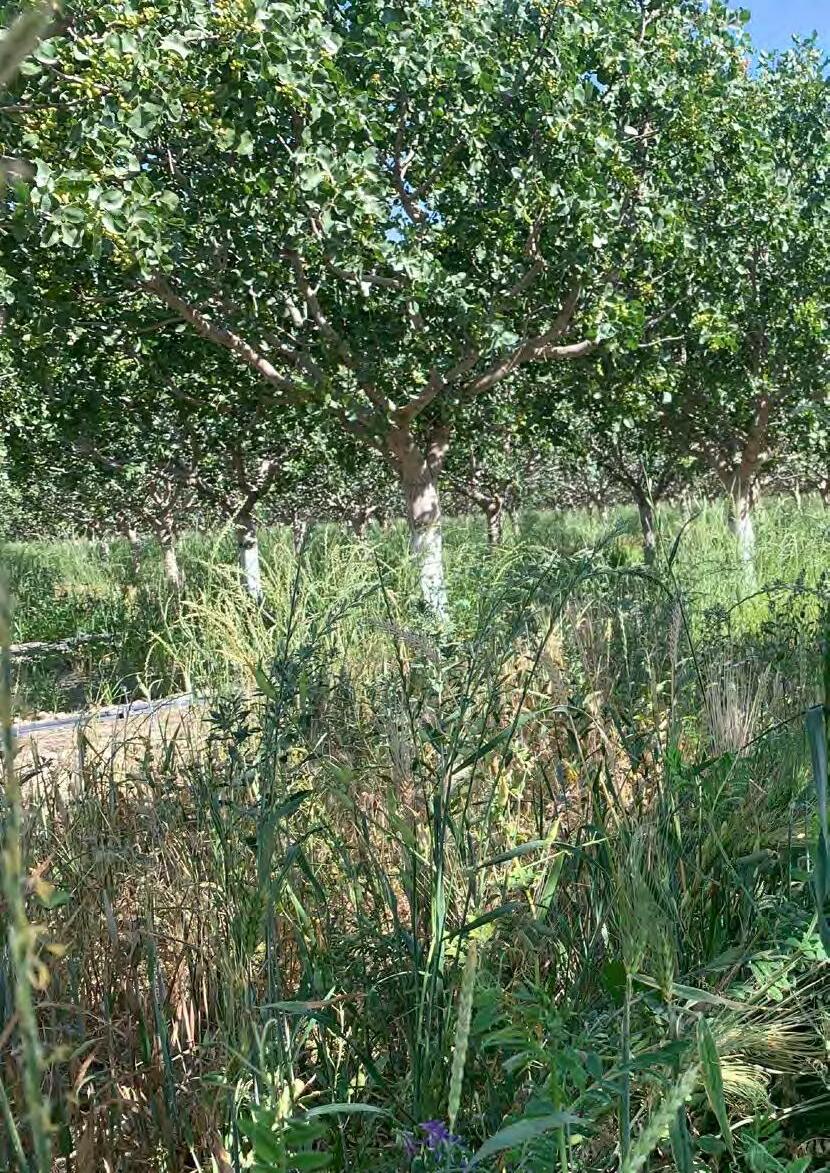






















































 Romania farms Climate positive blueberry production for the 2021 season
Romania forests Achieved Forest Stewardship Council (FSC®) certification
USA
91% of diesel used (and 77% of all fuel) was biodiesel this last season
Romania farms Climate positive blueberry production for the 2021 season
Romania forests Achieved Forest Stewardship Council (FSC®) certification
USA
91% of diesel used (and 77% of all fuel) was biodiesel this last season

















































































